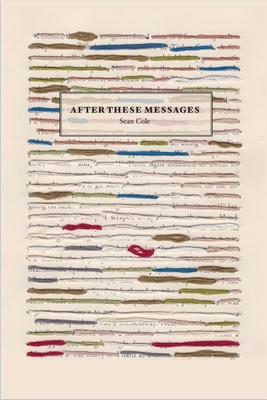Sean Cole's After These Messages is built around a series of poems written on the fly. Like Frank O'Hara's Lunch Poems, written during his lunch breaks at NYC's Museum Of Modern Art, Cole wrote poems while watching TV advertisements. Like ads, the poems are speedy and compressed, packed with argument and imagery, sometimes sublime, sometimes hilarious, but always bordering on the hallucinatory. They weave in and out of the dramedy of this fine collection -- interstitial featurettes that punctuate the action of what you sat down to watch in the first place.
Ads don't wait for you; you have to catch up to them. A hallmark of Cole's poems is how quickly they can suggest a whole story, and a second or third version of that story, before veering into a whole new train of associations. You don't sit down to read a Cole poem; you glimpse it through the window of the subway car passing your subway car in a tunnel between stations. When a computer's autocorrect function confuses one word for another, the "mistake" is incorporated. Both words are reported as apt. Accidents become decisions. Readers watch as the poems improvise themselves in real time. Sometimes, the ending isn't clear until the lights blink out suddenly.
After These Messages marries the plain-spokenness of one of public radio's most esteemed storytellers, with the buoyant fabulism of O'Hara, Kenneth Koch, and Kenward Elmslie. Unlike a lot of innovative poetry that reads like a lab report of the experiment, Cole's poetry pulls the reader into the exuberant middle of the experiment, so that we can experience the doubled pleasure of mystery mixed with discovery.
